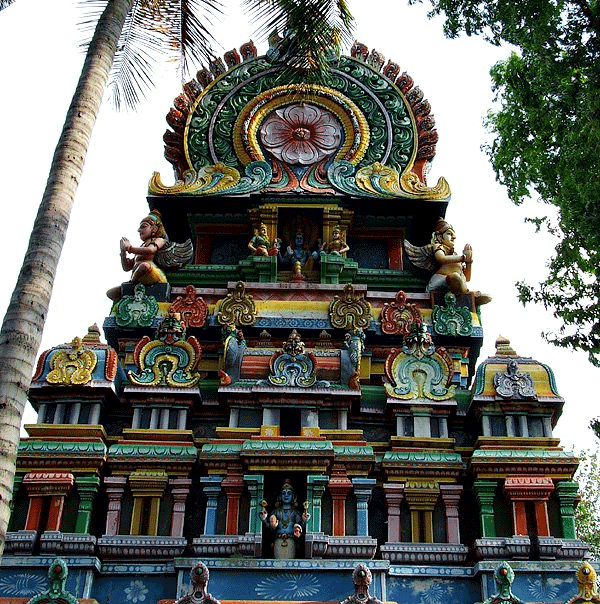BHAKTIVEDANTA PURPORT: “The nine principal rishis, or sages, are Marichi, Atri, Angira, Pulastya, Pulaha, Kratu, Bhrigu, Vashishtha and Atharva.
Kutsa Rishi
BY: SUN STAFF

The Battles of Indra and Associates
Sep 12, 2014 — CANADA (SUN) — A study of the famous Rishis and Munis of Vedic literature.
Kutsa Rishi is one of the last Saptarishis we will cover in this series. He is mentioned many times in the Rig Veda, in various contexts. He is often associated with Lord Indra, both as a close friend and as a look-alike. In one Rigvedic hymn, Kutsa is mentioned as Arjuneya, the son of Arjun. Elsewhere, Kutsa is invoked together with Indra, as Indra-Kutsa. The Rishi is also known for his sweetness.
Rig Veda 4.16.10 there is mention of a conversation between Sage Vamadeva and Indra which illustrates how Kutsa and Indra were not only intimate friends, but were also 'look-alikes' -- so much so that at one point, Indrani herself could not tell them apart.
Rishi Kutsai was the son of a Rajarishi named Ruru. Indra helped Ruru by decimating his enemies, and he invited Kutsa to Indraloka to celebrate the victory. Once, Kutsa fell into a deep well, and Indra came running to save his friend. This pastime is mentioned in Rig Veda10.40.6.
In Rig Veda106.6 there is a suktam consisting of seven mantras. Although Kutsa Rishi discovered this suktam, he named it in conjunction with his guru, Angirasa, as the Kutsa Angeerasa. In Panini's Ashtadhyayi, he is mentioned as an old acharya. He is described as worshipping Agni in different forms, addressing him with different names.
One of Kutsa's enemies is Shushna, who he defeats with Indra's help. Indra removed the Sun disc for Kutsa, who is also referred to as Indra's charioteer. In one hymn 'the Kutsas' are mentioned in plural as a family of singers, in a song praising Indra. The Naighantuka states that Kutsa is a synonym of Indra's vajra.
In some sastric references, Kutsa is defeated by Indra, along with Ayu and Atithigva. In Rig Veda 1.53, the three of them are delivered by Indra to the young king Turvayana.
Kutsa is mentioned not only in the , but also in the Yajur and Samaveda. He is a descendant of Rishi Angira, so he is sometimes called Angiras.
There are several hymns found in Rig Veda Mandala 1 which are attributed to Kutsa Angirasa, and another hymn in the eighth Mandala (10.105) is attributed to Durmitra or Sumitra Kautsa, a descendant of Kutsa Rishi.
In the Rudram of Yajurveda, 65 out of 82 suktams are attributed to Kutsa. It is also stated that Kutsa Maharishi explained the allegories of the first laws of celestial bodies. In a chapter of the Raghuvamsa, Kalidasa invokes Sage Kutsa; he is acknowledged as having blessed the Raghus -- the dynasty to which the crown jewel, Lord Rama belongs.
(Kutsa Rishi, to be continued…)
Kutsa Rishi, Part Two
BY: SUN STAFF

Thiru Anbil Gopuram, where Kutsa Rishi did penance
Sep 13, 2014 — CANADA (SUN) — A study of the famous Rishis and Munis of Vedic literature.
Although Kutsa Rishi is known for the quality of sweetness he embodies, his name might appear to indicate something different. The Sanskrit word 'kutsa' means 'reproachful' or 'contemptuous', and is often associated with fault-finding. But in the case of Rishi Kutsa, the name indicates that as a great sage, he was displeased by the vagaries of the material world and verbally disciplined others.
Kutsa Rishi is known for another sort of sound vibration – the Prokshana-mantram
"Om Bhoo, Om Bhuvaha, Om Suvahaâ"
This is the fourth vyahrithi, 'swvah' in the Prokshana-mantram, familiar to those who meditate on Gayatri.
Sastra states that water has the ability to purify anything it touches. This potency is transmitted to water by the power of the Prokshana-mantram. The Taittriya-samhita states that the mantra drishtas, or the personal embodiments of this mantram, are Atri, Brigu and Kutsa Maharishis.
Despite Kutsa Rishis strict observances, however, it is said that he once made a mistake in pronouncing a Veda mantram, and for this he was cursed to be a frog in a well. Once his period of atonement had passed, Veda Purusha told him that even while he was a frog, he would remember his previous birth and could be relieved of the curse if he did penance in a pushkarani (holy waters), praying to Soundararaja Perumal at Valmiki kshetram for 48 days. This the Rishi did, the curse was released, and he regained his former body.
The Valmiki kshetram referred to here is Thiru Anbil, which is situated 5 miles east of Lalgudi, in Tiruchy District of Tamil Nadu. It is the birthplace of the great sage, Valmiki, and is one of the 108 Divya Desams. The temple pushkarani (theertham) is known as Mandooka Pushkarani.
Thiru Anbil temple is believed to have been built by the Medieval Cholas of the late 8th century A.D., with later construction by the Vijayanagar kings and Madurai Nayaks. The copper plate inscriptions from Anbil indicate generous contributions by the Chola kings to the temple. A granite wall surrounds the temple, enclosing all its shrines and theertham. The rajagopuram, the temple's gateway tower, is east facing and has a 3-tier structure. The temple is located on the banks of river Kollidam. Sundararajan Perumal (Lord Visnu) is believed to have appeared to Brahma and sage Suthaba.
Replies